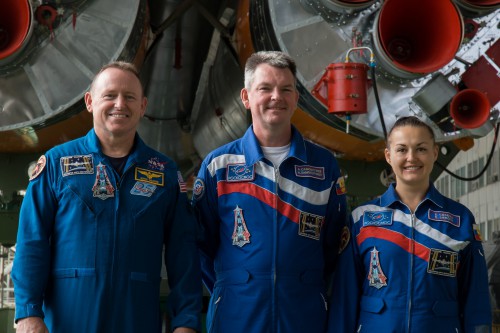Dear readers and followers,
Today, India triumphed in its first interplanetary mission, placing a satellite into orbit around Mars on Wednesday morning and catapulting the country into an elite club of deep-space explorers. The Mangalyaan probe is a spacecraft powered by solar arrays and packed with five instruments to study the surface and atmosphere of Mars.
Credit image: Indian Space and Research Organization
Scientists broke into wild cheers as the orbiter's engines completed 24 minutes of burn time to maneuver the spacecraft into its designated place around the red planet. "We have gone beyond the boundaries of human enterprise and innovation," Prime Minister Narendra Modi said, standing alongside scientists with the Indian Space and Research Organisation at the command center in the southern tech hub of Bangalore. "We have navigated our craft through a route known to very few," Modi said, congratulating the scientists and "all my fellow Indians on this historic occasion." Scientists described the final stages of the Mars Orbiter Mission, affectionately nicknamed MOM, as flawless. The success marks a milestone for the space program in demonstrating that it can conduct complex missions and act as a global launch pad for commercial, navigational and research satellites.
It's also a major feat for the developing country of 1.2 billion people, most of whom are poor. At the same time, India has a robust scientific and technical educational system that has produced millions of software programmers, engineers and doctors, propelling many into the middle class.
Getting a spaceship successfully into orbit around Mars is no easy task. More than half the world's previous attempts, 23 out of 41 missions, have failed, including one by Japan in 1999.
USA had its first success with a 1964 flyby by a spacecraft called Mariner 4, returning 21 images of the surface of the planet. The former Soviet Union reached the planet in 1971, and the European Space Agency in 2003. NASA congratulated India in a Twitter message welcoming MOM to studying the red planet. On Sunday, NASA achieved its own success in placing its Mars Atmosphere and Volatile Evolution mission, or Maven, in position. The U.S. has two more satellites circling the planet at the moment, as well as two rovers rolling across the rocky Martian surface. The European Space Agency's Mars Express, launched over a decade ago, is still operating as well.
India was particularly proud that MOM was developed with homegrown technology and for a bargain price of about $75 million, a cost that Modi quipped was lower than many Hollywood film budgets. By comparison, NASA's much larger Maven mission cost nearly 10 times as much at $671 million.
India's 1,350 kg orbiter will now circle the planet for at least six months, with five solar-powered instruments gathering scientific data that may shed light on Martian weather systems as well as what happened to the water that is believed to have existed once on Mars in large quantities.
It also will search Mars for methane, a key chemical in life processes on Earth that could also come from geological processes. None of the instruments will send back enough data to answer these questions definitively, but experts say the data will help them better understand how planets form, what conditions might make life possible and where else in the universe it might exist India wanted the spacecraft - also called Mangalyaan, meaning "Mars craft" in Hindi -to show the world its ability to design, plan, manage and operate a difficult, deep-space mission. India has already conducted dozens of successful satellite launches, including sending up the Chandrayaan-1 lunar orbiter, which discovered key evidence of water on the Moon in 2008.
The country's space scientists are already planning new missions, including putting a rover on the Moon. But space agency chief K. Radhakrishnan said their main focus would be to continue developing technologies for commercial and navigational satellite applications.
Remember that this blog is free, but you can support us with Flattr
Stay tuned






